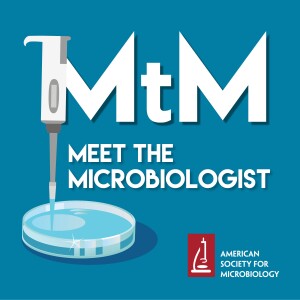
109: Antimicrobial-Eating Microorganisms and the Resistome with Gautam Dantas
 2019-05-31
2019-05-31
While searching for lignin-degrading soil microbes, Gautam Dantas discovered growth in an antimicrobial compound-containing control! He has since studied the resistance determinants (resistome) of soil and clinical samples to determine their similarities.
Julie’s Biggest Takeaways:
Sequencing information is extremely useful for descriptive studies, but there’s an increasing trend in microbiome studies to use the sequencing data as a basis for forming hypotheses. These hypotheses can then be tested by some variation of classical techniques, be in biochemical, culturing, animal models, etc. Surveying who is there helps scientists make testable predictions.
Gautam’s resistome research is built on the research of many, but especially inspired by:
Gerry Wright, who proposed the presence of a resistome. The resistome is a collection of genetic determinants in a microbial group that allows phenotypic resistance against antimicrobial compounds. Julian Davies, who proposed the producer hypothesis. The producer hypothesis suggests that the same microorganisms that produce antimicrobials must also be the source of resistance, because they need to be able to protect themselves against the action of their own compounds.Gautam’s discovery of antibiotic-eating microbes was completely serendipitous! As a postdoc, he was looking for lignin-degrading soil microbes and set up a culture with antibiotics as a negative control. To his surprise, there were some soil microbes that were able to grow - using the drugs as food! Samples from 3 different states were all able to support microbial life.
The resistome of soil is very similar to the resistome of clinical samples, but the study design doesn’t allow Gautam to conclude directionality: do the genes move from the clinic to the environment or from the environment to the clinic? This requires studying the resistomes over time, rather than the snapshot analyses this study generated. However, Gautam’s group has received funding to do longitudinal studies, which will help scientists understand how resistance originates and then moves to new microbial communities.
Context is very important for determining disease. A microbe may make one person but not another sick. Context can also be the genes carried by the microbe, and E. coli is a great example of this. Some E. coli are very good at causing UTIs but cause no disease when carried in the gut.
Links for this Episode:
Take the MTM listener survey (~3 min.) Gautam Dantas lab website Wright G.D. The Antibiotic Resistome. Expert Opinion in Drug Discovery. 2010. Davies J. and Davies D. Origins and Evolution of Antibiotic Resistance. MMBR. 2010. Bloomberg: Germ-Killing Brands Now Want to Sell You Germs HOM Tidbit: Recycling Metchnikoff: Probiotics, the Intestinal Microbiome and the Quest for Long Life
More Episodes
 2010-10-06
2010-10-06
 2010-09-23
2010-09-23
 2010-09-01
2010-09-01
 2010-08-18
2010-08-18
 2010-07-14
2010-07-14
 1
1
 2010-07-01
2010-07-01
 1
1
 2010-05-19
2010-05-19
Create your
podcast in
minutes
- Full-featured podcast site
- Unlimited storage and bandwidth
- Comprehensive podcast stats
- Distribute to Apple Podcasts, Spotify, and more
- Make money with your podcast
It is Free
- Privacy Policy
- Cookie Policy
- Terms of Use
- Consent Preferences
- Copyright © 2015-2024 Podbean.com




